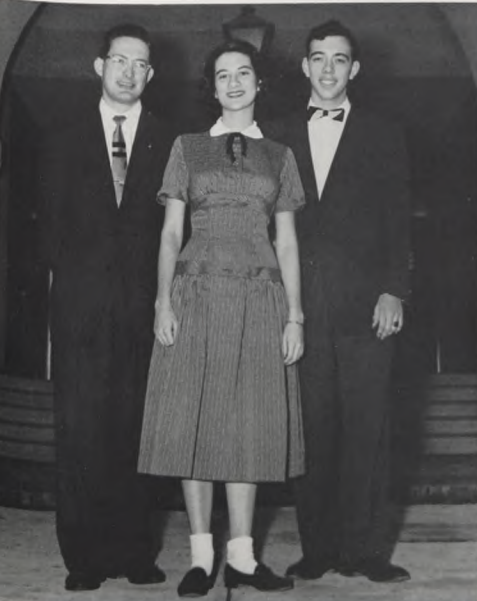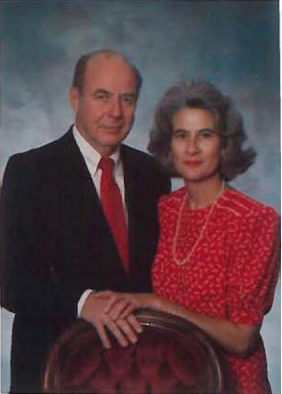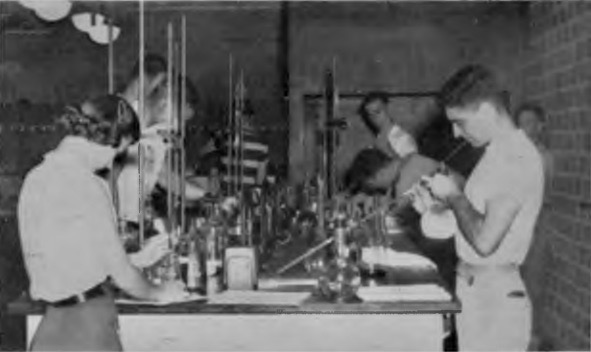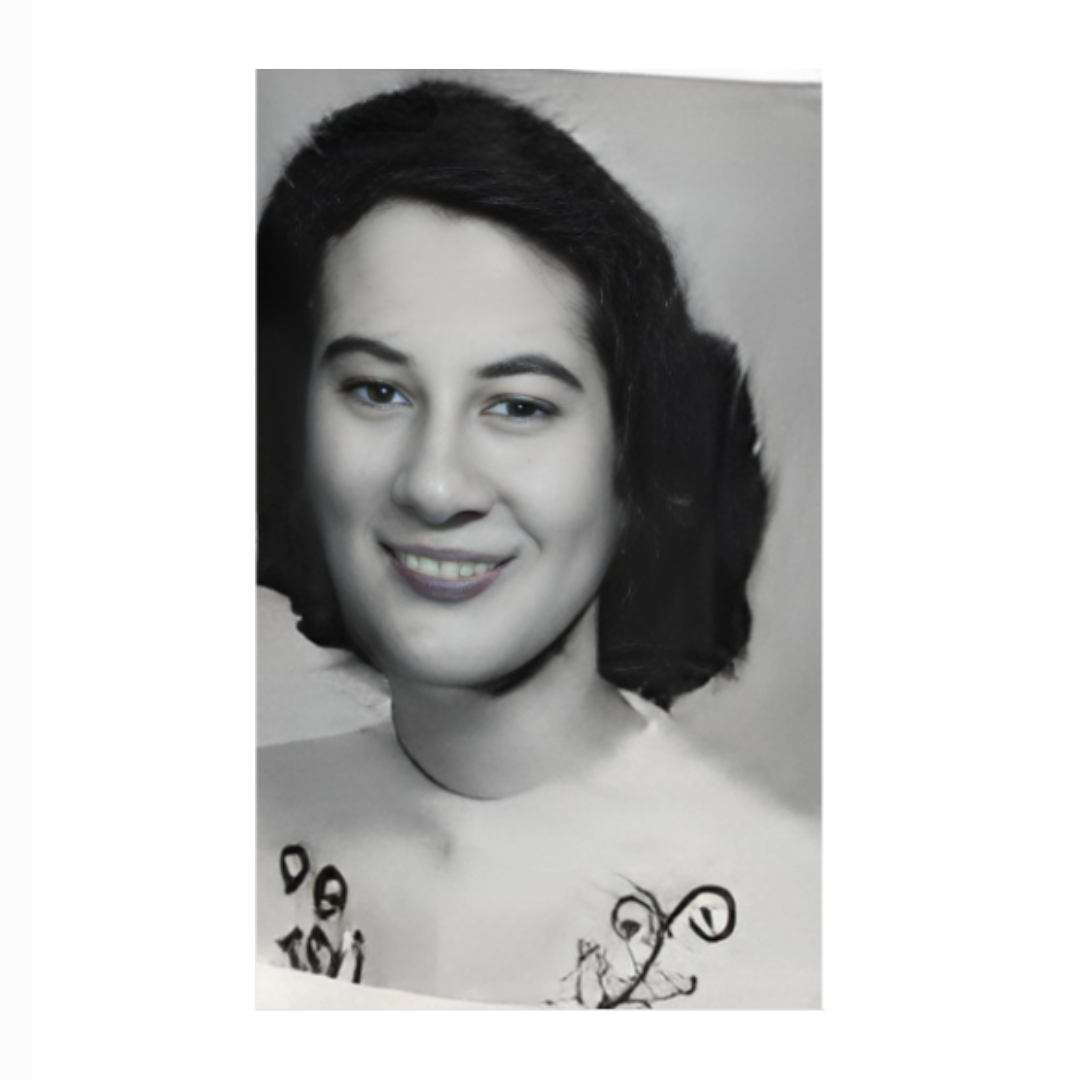Charmaine in her first chemistry class at LSU (Gumbo Yearbook, 1954).
The Element of Perseverance: A Woman's Journey in Chemistry
March 25, 2024

1956 College of Physics and Chemistry Student Officers: Phil Hablutzel, President; Charmaine Bienvenu, Secretary-Treasurer (center); Henry Rawls, Vice-President
– Gumbo Yearbook, 1956
Charmaine Bienvenu's story begins in the town of St. Martinville, Louisiana, where, in 1935, a young girl with a flair for numbers was born. Within the walls of Our Lady of Mercy School, under the watchful eyes of her dedicated nun teachers, Charmaine's intellect shined.
Charmaine naturally excelled in mathematics, which the nuns proudly reported to her parents. But her trajectory took a pivotal turn with the arrival of a nun from a college in St. Louis, who recognized Charmaine's potential beyond arithmetic and introduced her to chemistry.
This new teacher and mentor, who stayed after school to indulge Charmaine's curiosity with extra experiments, saw a spark in her that was too bright to ignore.
"Chemistry came easy to me," Charmaine stated while recalling their after-school experiments. “My parents accepted my interest in chemistry but assumed I would lean towards chemistry education because of the expectations of women during that time.”
With a determination inspired by her chemistry teacher, Charmaine said farewell to her graduating class of a dozen peers and enrolled at Louisiana State University. She would pursue chemistry and become the sole young woman in her chemistry classes.
Charmaine remembers a moment when, upon stepping into a chemistry classroom, she was confronted with a professor's surprised inquiry, "What are you doing here, young lady?" When she presented her enrollment card to him, he retorted, "We'll see about that."
However, Professor Virginia Rice Williams stood out as a beacon of encouragement in the department. As one of only two women faculty members, Williams offered young Charmaine the inspiration and mentorship needed as she faced the challenges of becoming a chemist in a male-dominated field.
The shared resilience and determination paved the way for others to recognize Charmaine's talents in her academic journey.
Charmaine's interest in electrical apparatus and exceptional soldering skills did not go unnoticed by Professor Paul Delahay, who informed her that her nimble hands were deemed an asset, leading to her inclusion in his lab.
Charmaine not only found her calling in chemistry research at LSU but also the love of her life, Gleb Mamantov, a doctoral student whose passion for chemistry matched her own.
Born in Latvia, Gleb Mamantov and his family fled from anti-communist pressures in 1944, eventually settling in a Bavarian displaced persons' camp until 1949. That year, at age eighteen, Gleb and his family moved to the United States.
Arriving at LSU with limited English and empty pockets, Gleb found support in the Lambda Chi Alpha Fraternity and the University, which provided him with housing and waived his tuition. He excelled, graduating magna cum laude in just four years, and earned his MS in 1954 and his PhD in 1957 under Professor Paul Delahay.

Dr. Gleb Mamantov and Dr. Charmaine Bienvenu Mamantov, 1983
After a proposal on the steps of Coates Hall and graduation, Charmaine and Gleb married in 1956 in St. Martinville by then-LSU Chemistry doctoral student and Catholic priest Fr. William J. Rimes.
After Gleb's three years of military service, Gleb and Charmaine realized their true passion lay in academia. They moved to the University of Wisconsin, where Charmaine began her graduate studies, and Gleb started a post-doctoral appointment.
In 1961, the Mamantovs moved to Knoxville, where Gleb became an assistant professor at the University of Tennessee at Knoxville, or UTK, and Charmaine resumed her graduate studies.
Charmaine completed her coursework shortly before giving birth to their third child. Although she preferred a Ph.D. in Chemistry, departmental regulations prevented her from obtaining a degree in the same department as her husband. Thus, she had to pursue and eventually earned a Ph.D. in Science Education.
Charmaine was an instructor at UTK, mainly teaching freshman chemistry and developing lab manuals that are still used today. She also unofficially worked in Gleb's research laboratory, studying molten salt chemistry.
Gleb actively advocated for his wife's recognition despite the challenges of the time when women scientists' contributions were often overlooked. As a result, she was listed as a co-author on several of their publications, including two patents and three books.
"My husband insisted that my name go on the publications I worked on. That was allowed. I loved working in the lab, but for me to say they would hire me as a tenure-track professor was out of the question," Charmaine said.
Gleb showed respect and support for Charmaine's work and was committed to ensuring her contributions were not overshadowed by gender biases in science.
"It might seem strange, but I was never bitter about the limitations of women in science during my career. Sure, I would get angry once in a while, but I remind myself: 'You've got three wonderful kids, and this job has allowed you to raise them while still pursuing research.' And I've got a husband who supports me in everything I want to do. That's something truly special," Charmaine said.
Following Gleb's passing in 1995 at age 63, Charmaine continued teaching freshman chemistry until she retired at 70.
Today, Charmaine enjoys time with her family, sharing her tales of determination with her grandchildren and teaching the values of perseverance and curiosity. Her granddaughter, Dr. Margaret Mamantov, proudly carries on this tradition, serving as a faculty member in the UTK Biology Department.
Dr. Charmaine Bienvenu Mamantov's journey inspires, highlighting the significance of mentorship, support, and bravery in following one’s passion, even when faced with adversity.
Photo Gallery


